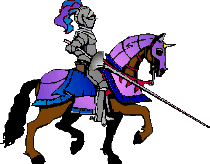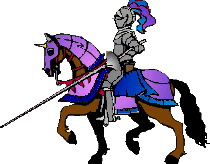 |
Maud and the Wyvern |  |
It appears as the emblem of envy, insignia of war, personification of
pestilence, representation of non-transmuted matter in alchemy, disguise of the
devil and as a prevalent device in heraldry. Rarely, however, does it elicit
emotions of friendship or love - which is why the medieval legend of the
Mordiford wyvern is so unexpectedly poignant.
Maud's parents had little objection to their young daughter owning a cat or
dog - but they were more than a little perturbed by the creature that stood
before them, small and colourful though it might be. Earlier that day, Maud had
been walking through the woods near her home at Mordiford, in English county of
Herefordshire, when she came upon a strange little animal looking forlorn and
dejected. It was poking its snout listlessly a clumb of flowers, and was quite
evidently lost.
The creature looked like a baby dragon: its body was no bigger than a cucumber
and its bright green scales - sparkling like a shining peridots in the
sunlight - made it appear even more like one as it squatted upon its single
pair of legs. Every so often, it would open its fragile, membranous wings and
flutter them hopefully, but it was clearly far too young to fly. As soon as it
saw Maud, however, its sadness evaporated, and it began chasing merrily around
her, frolicking with joy that it was no longer alone.
Maud was throughly enchanted by her unexpected playmate, and happily took it
back home with her, convinced that her parent would share her delight in the
tiny creature. But they recognized it as a wyvern (albeit a very young one),
and their reaction was very different. In word that brooked no opposition, they
insisted that she should take it back to where she had found it and leave it
there. Steeling themselves to ignore her tearful protestations, they closed
the cottage door behind her and wathched, sadly but with great relief, as
their daughter walked slowly back to the woods, followed by her strange little
companion.
Once out of sight, howerver, Maud turned away from the main woodland path and
ran instead toward her secret hidding place - a little nook known only to her,
where she spent many happy hours concealed from the rest of the world. Here
she placed her new-found pet, and here would remain, where she could visit it,
play with it, and feed it every day, safe from the prying eyes of her parents
and the other Mordiford folk.
As the months went by, howerver, Maud's pet grew even larger, and at a quite
alarming rate. The cucumberlike youngster was maturing into an impressive adult
wyvern, whose soft green scales had hardened into razorsharp discs of a deep
viridescent tone, whose gossamer wings had become leathery and bat-like, and
whose curly tail bore at its tip a deadly sting.
The saucers of milk brought to it everyday by the ever-faithful Maud, which
had once satisfied its juvenile appetite, were no longer able to dispel her
pet's pangs of ravenous hunger. And so it began to seek sustenance elsewhere.
The local farming community soon suffered great losses of livestock, and it
was not long before the culprit was unmasked. Maud's dragon had acquired a
liking for the flesh of sheep and cows. But worse was to come. When some of
the bolder farmers attempted to deal with the monster, it ably defended
itself, and in so doing discovered another taste much to its liking - humans!
Maud was devastated by the actions of her former playmate, and begged it to
end its murderous assaults upon the townfolk, but to no avail. Not even gentle
rearing by a loving child could suppress indefinely the irascible and predatory
insticts of a true dragon. With the advent of maturity, these had inevitably
been unleased in a violent torrent of uncontrollable, primeval force. Just one
person remained safe from the marauding wyvern - Maud, its early playmate and
friend.
Not for her the flame and the fear, only the love that ever the heart of the
most terrible dragon contains, but which is so rarely ignited by human. She
alone could walk safely beside it, stroke its ebony claws and gaze without
trepidation into its eyes of blazing chrysolite. Such is the power of
friendship and love.
Neither of these, howerver, was sufficient to change to inevitable course that
events were about to take. The wyvern's tyranny had to be countered if
Mordiford's habitants were to survive. And so it was that one morning, a tall
figure encased in armour and mounted upon a magnificent steed rode into the
woods, with a sturdy lance grasped firmly in his hand.
A member of Mordiford's most illustrious family, the Garstons, he dismounted
and courageously sought out his dreadful quarry. Suddenly, from amid a tangled
mass of foliage, a massive green monster lunged forward; it scaly covering had
imitated so intimately the leafy vegetation that it had been completely
invisible as it lay in wait for its opponent.
Instinctively raising his shield, Garston deflected the great blast of fire
that roared from the wyvern's gaping jaws, and aimed his lance at its thoat,
distended from the force of its expulsion of flame. The lance pierced the
monster's flesh, and an explosion of dark blood burst forth, staining the
grass. Garston also carried a sharp sword, and was about to plunge it into the
stricken creature's head when a young girl, screaming not in fear but in
hysterical rage, ran out of some bushes and starled hurling stones at him. His
horse reared up in alarm, but far more starling to Garston was the
extraordinary sight of this same child, kneeling on the blood-soaked grass
and weeping uncontrollably, with her arms around the neck of the dying wyvern.
Unnerved, and oddly perturbed by his success in slaying the huge dragon that
had terrorized Mordiford for so long, Garston rode away, back to the joyful
villagers - leaving behind a dead monster with its only friend, a girl called
Maud for whom the innocence of childhood had come to a sudden and savagely
premature end.